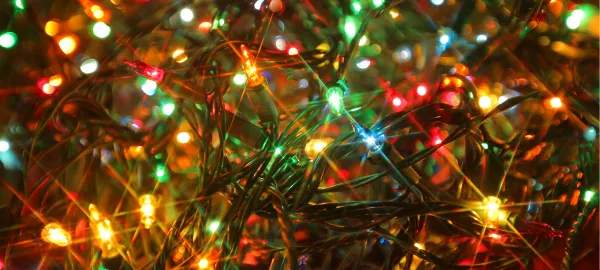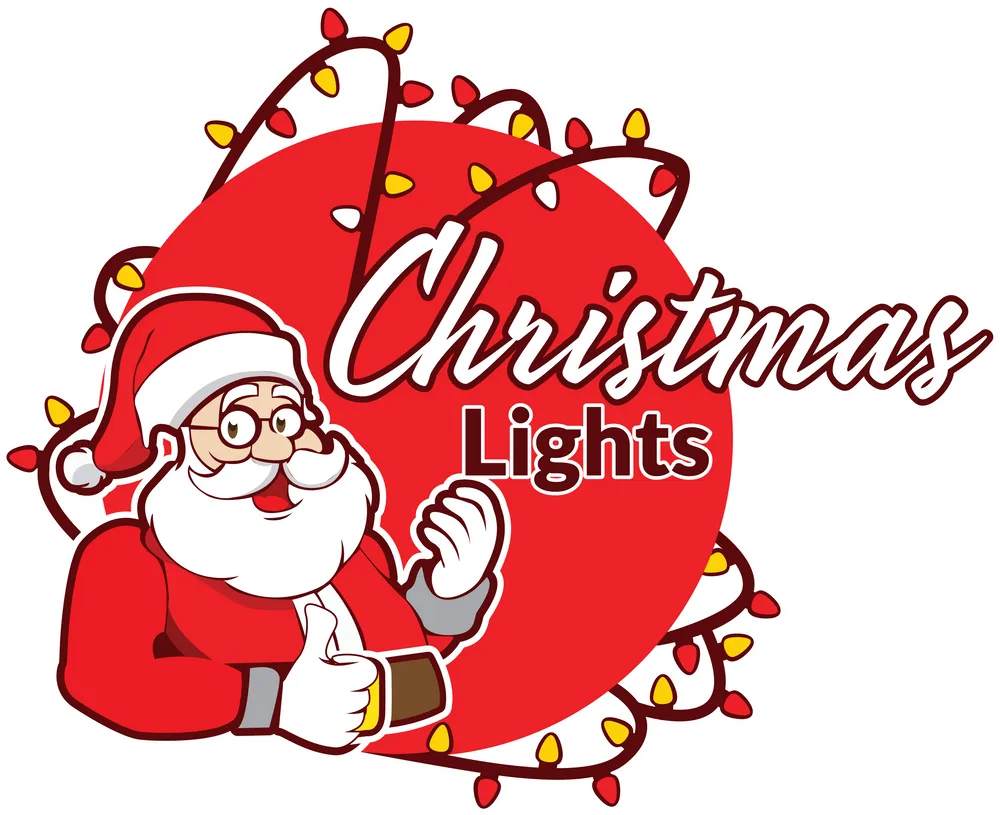Blog
Our Top Blog Posts

How Many Christmas Lights Can You String Together Safely? Electrical Loading Dos and Don'ts
Can You String Too Many Christmas Lights Together?
The familiar sight of countless glittering holiday lights adorning homes and trees is one of the most beloved parts of Christmas. From simple white lights elegantly wrapped around a doorway to elaborate RGB light shows blinking to the Trans-Siberian Orchestra, festive illuminations transform houses into winter wonderlands.

However, with great Christmas spirit comes great responsibility when decorating. Excessive stringing of lights can quickly turn our decked halls from a winter dreamscape into an electrical nightmare. So how do responsible revelers walk the line between spreading seasonal joy and overloading circuits?
General Limits for Connecting Light Strands
The first rule of thumb when decorating for the holidays is following manufacturer guidelines on how many light strand sections can be connected from end-to-end (known as running strands “in series”). Most modern pre-lit LED and incandescent light strings follow similar capacity standards set by safety organizations like Underwriters Laboratories (UL).

UL’s specifications state that up to 210 watts total can be safely connected in one end-to-end run. This means a 50-watt string, like a typical 100-light incandescent strand, reaches max capacity at around 4 strands attached end to end before plugging into an outlet. For newer LED strands, which use a fraction of the energy, 10 strings or more may fall within the 210-watt limit.
Always check the tag or packaging for a light strand’s wattage before connecting strands together or plugging them in. Exceeding roughly 200 watts in a series circuit risks tripping breakers, overheating wires, and electrical fires. Consider investing in a handheld voltage meter to test overall watt draw if combining many strings.
Incandescent Bulbs: Be Extra Vigilant About Limits
Nowadays, LED lights are rapidly becoming the dominant holiday decoration option for good reason - they last longer, are more durable in cold weather, and use up to 90% less energy than traditional bulbs. However, many revelers still unwind heirloom strands of decades-old mini Italian twinkle lights each Christmas.
If you exclusively use modern LED strands on timers, you likely need not worry about exceeding outlet capacity. However, exercise abundant caution when connecting older-style incandescent lights, especially on interior trees. A single 100-bulb incandescent strand can draw up to 34 watts. Connect just six of these classic strings, and you may suddenly be flirting with tripping hazards.
Keep close tabs on the dated tag noting wattage and bulb count on heirloom strands. Consider replacing any with worn insulation or incomplete sockets immediately with new LED strands. And never connect more than three or four decades-old incandescent strands in one outlet run - their higher energy use builds up quickly!

Beware Exterior Overloads Tripping GFCIs
While most modern homes have 15 to 20-amp interior circuits that can safely accommodate some holiday lighting excess, exterior outlets often run on more sensitive GFCI circuits designed to prevent electrocution and shock risk in damp conditions. Connect too many strands outside, and you may continually trip your exterior GFCI breaker.

Weatherproof LED light strands typically use less than 5 watts apiece. So while 10-12 of these low-energy strands may work fine strung across interior ceilings and trees on a 15-amp circuit, outside may be another story. Consider limiting exterior GFCI circuits to six or fewer connected stands to keep your dazzling displays from repeatedly shorting out.
Use Common Sense to Assess Total Connected Wattage
UL technical safety standards aside, employ some old-fashioned common sense when judging total lighting capacity on a circuit. Keep a running tally of tagged wattages as you string light strands together and plug them in. If you mix modern LED and classic incandescent bulbs, this number can quickly get away from you.
Use a special tools like the kill a watt meter that will show you how many amps you were pulling so you don't overload your circuit. You can check this out on the Christmas Lights tools page.

Watch for early warning signs of an overloaded circuit like lights noticeably dimming or flickering when other appliances kick on. Notice extension cords or light strands feeling hot to the touch after prolonged use. These clues indicate you are approaching the limit of your electrical capacity. Unplug strands immediately if you smell burning plastic or see any smoke.
Consider dividing extensive lighting displays between multiple outlets and circuits if wattage totals concern you. Make the most of handy outdoor receptacles and indoor extension cords to spread the electrical load across more than one power source. Toggle strands on timers to prevent all displays drawing maximum wattage simultaneously.
By carefully tracking wattages on your beloved holiday lights each season and Remaining ever vigilant of electrical capacity, you can deck your halls with LED wonder while keeping safety first. Let the holiday shine bright!

Frequently asked questions for Christmas Lights
How many LED C9 bulbs can I safely connect in one line?
When using connector clips and wiring your own custom LED C9 bulbs, you can safely connect up to 700-800 individual 5-7 watt bulbs in a single run, staying under 210 watts. Higher wattage bulbs would need to total less.

How Many Christmas Lights Can You String Together Safely? Electrical Loading Dos and Don'ts
Can You String Too Many Christmas Lights Together?
The familiar sight of countless glittering holiday lights adorning homes and trees is one of the most beloved parts of Christmas. From simple white lights elegantly wrapped around a doorway to elaborate RGB light shows blinking to the Trans-Siberian Orchestra, festive illuminations transform houses into winter wonderlands.

However, with great Christmas spirit comes great responsibility when decorating. Excessive stringing of lights can quickly turn our decked halls from a winter dreamscape into an electrical nightmare. So how do responsible revelers walk the line between spreading seasonal joy and overloading circuits?
General Limits for Connecting Light Strands
The first rule of thumb when decorating for the holidays is following manufacturer guidelines on how many light strand sections can be connected from end-to-end (known as running strands “in series”). Most modern pre-lit LED and incandescent light strings follow similar capacity standards set by safety organizations like Underwriters Laboratories (UL).

UL’s specifications state that up to 210 watts total can be safely connected in one end-to-end run. This means a 50-watt string, like a typical 100-light incandescent strand, reaches max capacity at around 4 strands attached end to end before plugging into an outlet. For newer LED strands, which use a fraction of the energy, 10 strings or more may fall within the 210-watt limit.
Always check the tag or packaging for a light strand’s wattage before connecting strands together or plugging them in. Exceeding roughly 200 watts in a series circuit risks tripping breakers, overheating wires, and electrical fires. Consider investing in a handheld voltage meter to test overall watt draw if combining many strings.
Incandescent Bulbs: Be Extra Vigilant About Limits
Nowadays, LED lights are rapidly becoming the dominant holiday decoration option for good reason - they last longer, are more durable in cold weather, and use up to 90% less energy than traditional bulbs. However, many revelers still unwind heirloom strands of decades-old mini Italian twinkle lights each Christmas.
If you exclusively use modern LED strands on timers, you likely need not worry about exceeding outlet capacity. However, exercise abundant caution when connecting older-style incandescent lights, especially on interior trees. A single 100-bulb incandescent strand can draw up to 34 watts. Connect just six of these classic strings, and you may suddenly be flirting with tripping hazards.
Keep close tabs on the dated tag noting wattage and bulb count on heirloom strands. Consider replacing any with worn insulation or incomplete sockets immediately with new LED strands. And never connect more than three or four decades-old incandescent strands in one outlet run - their higher energy use builds up quickly!

Beware Exterior Overloads Tripping GFCIs
While most modern homes have 15 to 20-amp interior circuits that can safely accommodate some holiday lighting excess, exterior outlets often run on more sensitive GFCI circuits designed to prevent electrocution and shock risk in damp conditions. Connect too many strands outside, and you may continually trip your exterior GFCI breaker.

Weatherproof LED light strands typically use less than 5 watts apiece. So while 10-12 of these low-energy strands may work fine strung across interior ceilings and trees on a 15-amp circuit, outside may be another story. Consider limiting exterior GFCI circuits to six or fewer connected stands to keep your dazzling displays from repeatedly shorting out.
Use Common Sense to Assess Total Connected Wattage
UL technical safety standards aside, employ some old-fashioned common sense when judging total lighting capacity on a circuit. Keep a running tally of tagged wattages as you string light strands together and plug them in. If you mix modern LED and classic incandescent bulbs, this number can quickly get away from you.
Use a special tools like the kill a watt meter that will show you how many amps you were pulling so you don't overload your circuit. You can check this out on the Christmas Lights tools page.

Watch for early warning signs of an overloaded circuit like lights noticeably dimming or flickering when other appliances kick on. Notice extension cords or light strands feeling hot to the touch after prolonged use. These clues indicate you are approaching the limit of your electrical capacity. Unplug strands immediately if you smell burning plastic or see any smoke.
Consider dividing extensive lighting displays between multiple outlets and circuits if wattage totals concern you. Make the most of handy outdoor receptacles and indoor extension cords to spread the electrical load across more than one power source. Toggle strands on timers to prevent all displays drawing maximum wattage simultaneously.
By carefully tracking wattages on your beloved holiday lights each season and Remaining ever vigilant of electrical capacity, you can deck your halls with LED wonder while keeping safety first. Let the holiday shine bright!

Frequently asked questions for Christmas Lights
How many LED C9 bulbs can I safely connect in one line?
When using connector clips and wiring your own custom LED C9 bulbs, you can safely connect up to 700-800 individual 5-7 watt bulbs in a single run, staying under 210 watts. Higher wattage bulbs would need to total less.
Copyright ©2025 All Right Reserved website designed by christmaslights.io
Terms of Service / Privacy Policy
Have questions or need assistance?
Contact us at (855)619-LITE


